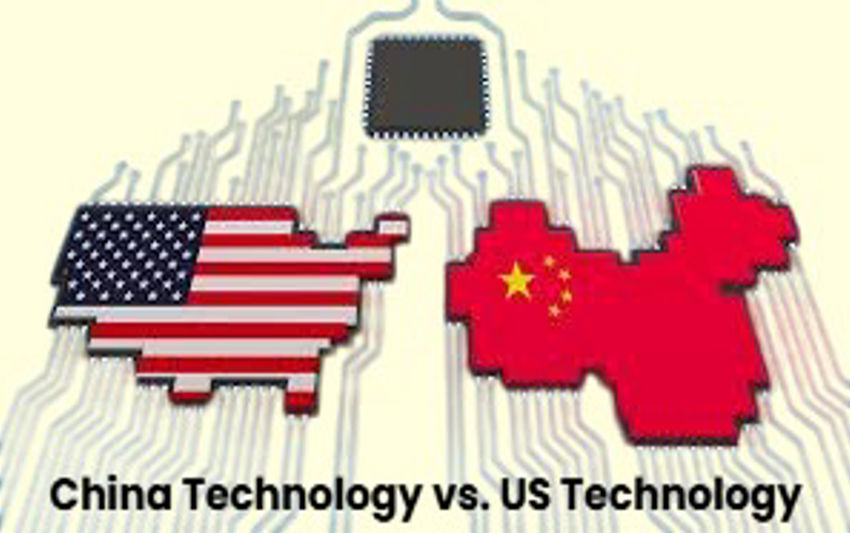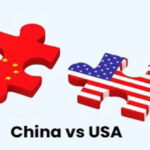The technological rivalry between China and the United States is one of the most significant battles of the 21st century. Both nations lead in innovation, but their approaches, strengths, and weaknesses differ significantly. While the US has long been the global leader in cutting-edge tech, China has rapidly closed the gap through state-backed investments, a massive domestic market, and aggressive research and development (R&D). This article compares China and the US in key technological domains, including artificial intelligence (AI), semiconductors, 5G, electric vehicles (EVs), and space exploration.
1. Artificial Intelligence (AI) and Machine Learning
United States
The US remains the leader in AI research, driven by tech giants like **Google (DeepMind), OpenAI, Microsoft, and Meta**. American universities (MIT, Stanford) produce groundbreaking AI advancements, and Silicon Valley attracts top global talent. The US leads in **generative AI (ChatGPT, Gemini), autonomous systems (Tesla’s self-driving cars), and cloud computing (AWS, Azure)**. However, concerns over ethics, regulation, and private-sector dominance sometimes slow deployment.
China
China wants to lead the world in AI by 2030, thus it has made it a national priority. Companies like **Baidu, Alibaba, Tencent, and Huawei** are heavily investing in AI applications, particularly in **facial recognition, surveillance, and smart cities**. The Chinese government supports AI through policies like the **”Next Generation AI Development Plan”**, enabling rapid implementation in public security and industry. However, China still lags in foundational AI research compared to the US.
**Verdict:** The US leads in AI innovation, but China dominates in AI deployment and government-backed applications.
2. Semiconductor and Chip Manufacturing
United States
The US is home to **Intel, NVIDIA, AMD, and Qualcomm**, which design the world’s most advanced chips. However, manufacturing has shifted overseas—**Taiwan (TSMC) and South Korea (Samsung)** produce most high-end chips. The **CHIPS and Science Act (2022)** aims to bring semiconductor production back to the US, with companies like Intel expanding domestic fabs.
China
China relies heavily on imports for advanced chips but is aggressively investing in self-sufficiency. **SMIC (Semiconductor Manufacturing International Corp.)** produces mid-range chips, but US sanctions (like Huawei’s ban) have hindered progress in cutting-edge **7nm and below** processes. China is pouring billions into domestic semiconductor R&D to reduce dependency on Western tech.
**Verdict:** The US dominates chip design, but China is catching up in manufacturing despite sanctions.
3. 5G and Telecommunications
United States
American companies like **Qualcomm, Verizon, and AT&T** lead in 5G development, but infrastructure rollout has been slower due to regulatory hurdles and high costs. Due of security concerns, the US has also placed restrictions on Chinese companies such as Huawei and ZTE.
China
With Huawei, ZTE, and China Mobile constructing the largest 5G network in the world, China is leading the globe in 5G rollout. The government’s aggressive push has led to **over 2 million 5G base stations**—far more than any other country. However, geopolitical tensions have limited Huawei’s global expansion.
While the US concentrates on security and private-sector innovation, China is at the forefront of 5G infrastructure.
4. Electric Vehicles (EVs) and Green Tech
United States
**Tesla** dominates the global EV market, while legacy automakers (Ford, GM) are transitioning to electric. The US excels in **battery tech (Solid-state batteries, Tesla’s Gigafactories)** but lags in overall EV adoption compared to China.
China
China is the **world’s largest EV market**, with companies like **BYD, NIO, and XPeng** outselling Tesla domestically. The government heavily subsidizes EVs, and Chinese firms control much of the **battery supply chain (CATL, BYD). China also dominates in **solar panels and wind energy** production.
Verdict China dominates EV production and green tech, while the US leads in innovation (Tesla, next-gen batteries).
5. Space Exploration and Aerospace
United States
NASA and private firms (**SpaceX, Blue Origin, Boeing**) lead in space exploration. **SpaceX’s reusable rockets (Falcon 9, Starship)** and **Starlink satellite internet** are revolutionary. The US also leads in **Mars missions (Perseverance rover)** and lunar exploration (Artemis program).
China
China’s **CNSA (China National Space Administration)** has made rapid progress with its **Tiangong space station, lunar missions (Chang’e), and Mars rover (Zhurong)**. China plans a **moon base by 2030** and is expanding its **satellite navigation system (BeiDou)** as a GPS alternative.
**Verdict:** The US leads in private space innovation, while China is catching up with state-funded missions.
Who is Winning the Tech Race?
The US remains the leader in **innovation, foundational research, and private-sector tech dominance**, while China excels in **rapid deployment, government-backed scaling, and manufacturing**. The US leads in **AI, semiconductors (design), and space tech**, whereas China dominates **5G, EVs, and green energy**.
The future will likely see **continued competition**, with the US focusing on cutting-edge breakthroughs and China emphasizing mass adoption and self-sufficiency. Both nations will shape the future of technology, but their rivalry could also lead to **fragmented tech ecosystems (US vs. China standards)


